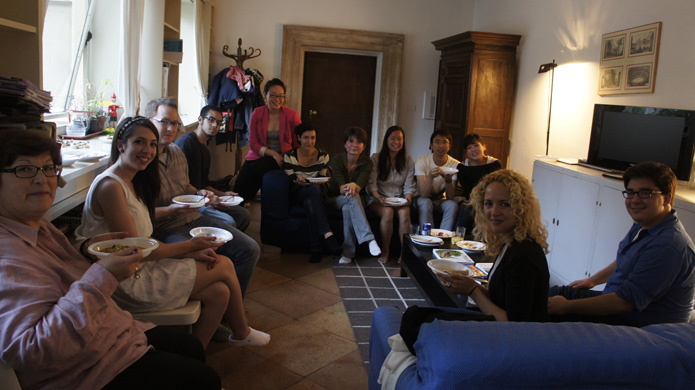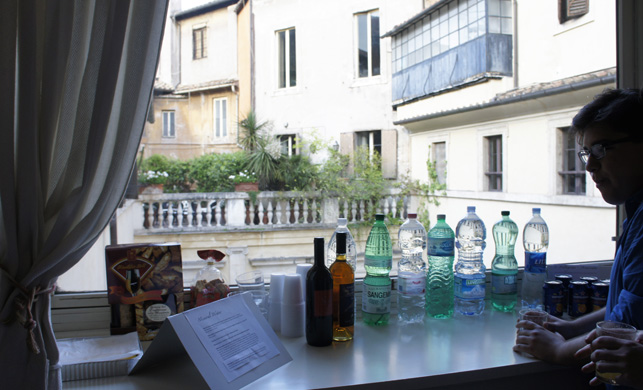
Today, Professor Medina Lasansky’s class (ARCH3819: 20th Century Italian Design) had a potluck dinner at her apartment. This dinner was a continuation of our last class discussion topic on Italian food; each student brought one Italian dish, presenting its recipe and history. We also invited Anna Rita to the dinner since she has been offering so much quality Italian food on the occasional group dinners at the Palazzo. Everyone brought amazing dishes, and we ate SO MUCH. It was another pleasant and happy meal in Rome.
The meal started with tasting several different types of bottled water produced in Italy- Medina gave us thorough explanations on bottled water madness in this peninsula! Here are some fun facts about Italian water brands and other beverages:
– Mineral Water
Mineral water is bottled water that comes from underwater sources. Italy Produces more than 600 brands of mineral water: Panna from Tuscany / San Benedetto from near Venice / Levissima (Northern’s Italy’s most popular brand) / Suio (popular in Lazio). The country consumes more than twice the European average (on average 200 liters a year). Tuscans are the most loyal buyers of mineral water.

Different waters have mineral contents (Sodium, Potassium, Calcium, Phosphorus, Magnesium, Iron, Iodine, Zinc, Florine, Magnesium, etc.) in differing amounts.
People drink according to their health needs. In other words, if you have high blood pressure, difficulty with digestion, are young, old – you drink accordingly. Babies and children should have water that is rich in calcium and magnesium. Adults over 50 should have water that is heavy in calcium to prevent osteoporosis. The elderly should drink water heavy in calcium, sulfates, and magnesium, etc.
Attempts to “re-brand” tap water (such as those undertaken in Florence by the grocery chain COOP) has been actively discouraged by Mineraqua (the consortium of mineral water producers).
– San Pellegrino (Aranciata) was created in 1932 using San Pellegrino mineral water and oranges from Sicily.
– Fanta (the German autarchical soda) – During World War II, a Coca Cola bottling plant in German invented Fanta (short for Fantasie) at a time when they were unable to import the ingredients to make Coca Cola due to an embargo. At the end of the war, Coca-Cola decided to export Fanta.
(Continued in the next post)
